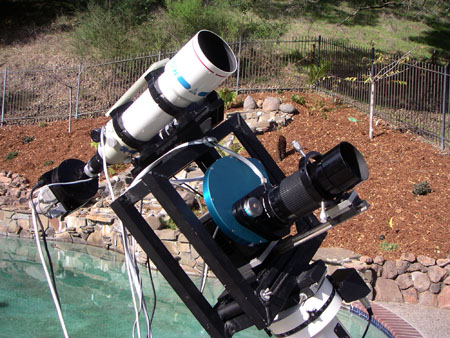
I'm a big fan of wide angle astroimaging with narrowband filters. But I have been frustrated using self guided cameras when using such filters. I have found that suitable guidestars can be difficult to secure often causing framing of the astro object to be compromised in order to locate one. Oftentimes I find that I need 20-30 seconds for guidestar integration. With a five to 10 minute exposure time, the necessary 4 -6 cycles needed to reqacquire guiding can be a significant time overhead under precious dark skies.
I have used my ST10XME mounted to my AP1200 mount via the threaded mounting hole in the camera body. This mounting method does not permit rotating the camera to another angle if desired.
I concluded I needed to make a mounting frame that could support a separate guider without introducing differential flexure. It also needed to provide a way to rotate the camera assembly through a full 90 degrees to permit optimal object framing.
I made a very rigid frame from 1.25" squarewall aluminum tubing (TIG welded) that supports a separate guide scope/camera and permits me to accomodate a wide range of imaging cameras while providing the ability to tilt the imaging camera to any angle from horizontal to vertical.
Here is a first light image taken using it (M16/M17/NGC6604 widefield in [SII], Ha and [OIII]).
Here is a first light image taken using it (M86 widefield galaxy region in RGB)
The following three photos were taken on November 19, 2006
Best Known Method (BKM)
The photos below were taken on 12 May 2005, on the first afternoon the system was ready for testing.
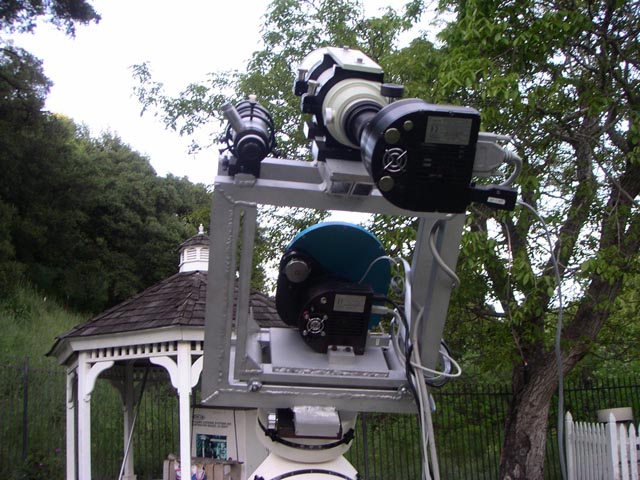
Initial deployment
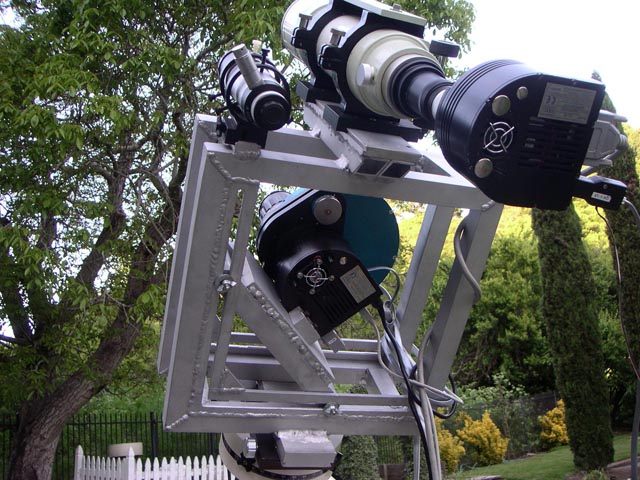
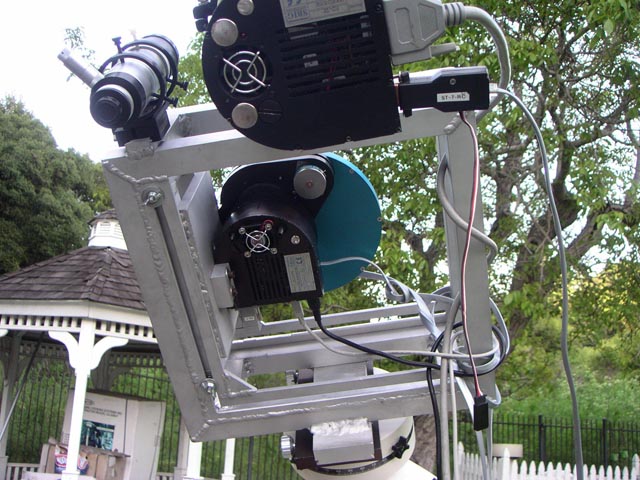
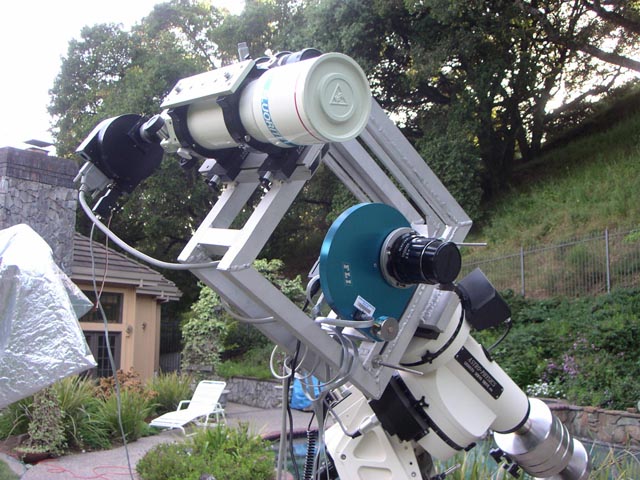
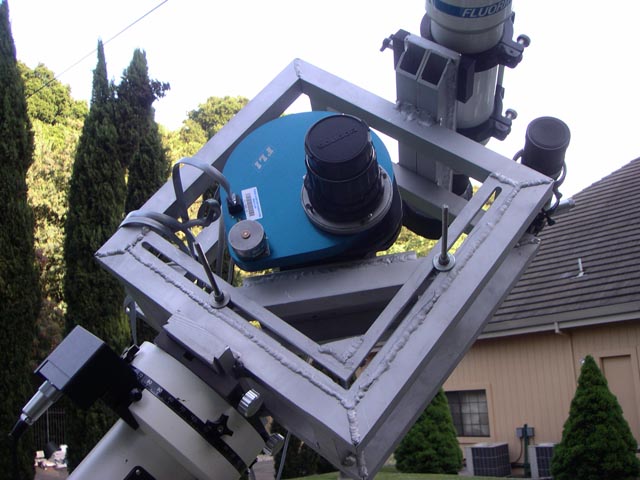
Dawn at first light on Fremont Peak